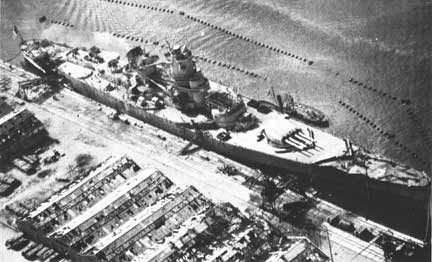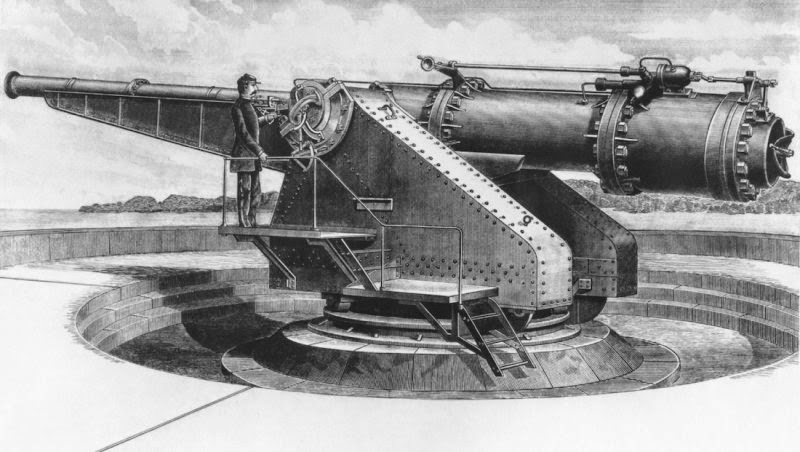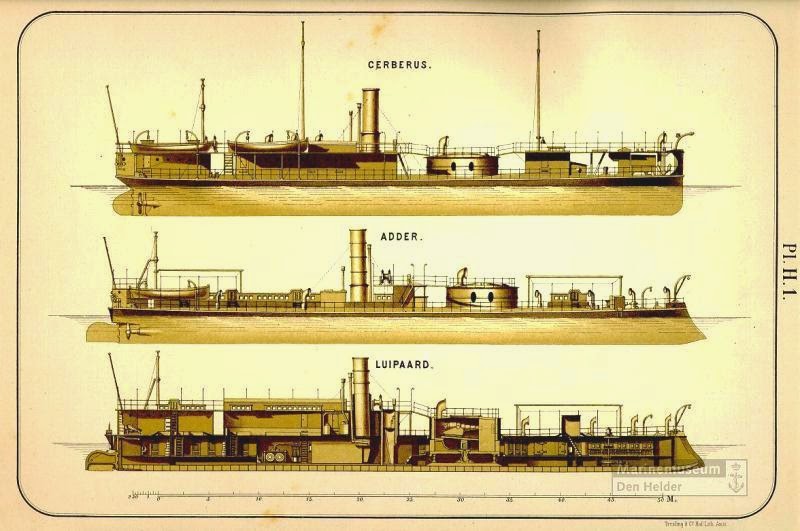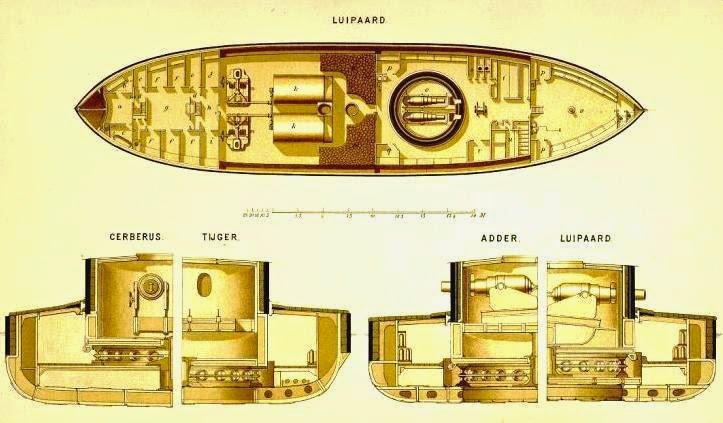In earlier posts I mentioned discovering the wonderful 1895 “Story of the Sea”, edited by “Q” (Sir Arthus Quiller Couch, with contributions from several luminaries of the era and with splendid illustrations. It dates from the period in which the British general public’s fascination with things nautical in general and with the Royal Navy in particular was at its zenith. One of the most impressive stories I found in it, and which I had not previously aware of, was of the survival, in appalling conditions, by HMS Guardian, en route to Australia in 1789. This epic of courage and seamanship is well worth sharing more widely.
![]() |
| The First Fleet entering Port Jackson, 26th January 1788, by E. le Bihan |
British settlement of Australia commenced in 1788 when the “First Fleet”, consisting of two naval escorts, six convict transports and three stores ships, arrived from Britain at Port Jackson – Sydney Harbour. This was a vast and ambitious project, all the more impressive in that the ships had to voyage half the way around the world yet arrived safely within two days of each other after a passage lasting some 250 days. There is almost a “science-fiction” air about the project, aimed as it was at establishing a large-scale settlement from the start, albeit one relying on convict labour for its development. The First Fleet landed 1373 people, of whom 754 were convicts (including some 189 women and 22 children, some born at sea). Officials and marines, the latter to preserve order and discipline, amounted to 259 and the remainder were seamen, many of whom were to leave again with the ships.
Further support for the infant colony was provided the following year, 1789, with the despatch of HMS Guardian, a frigate converted to carry stores. These consisted of seeds, plants, agricultural implements and livestock. She had a crew of 123, under the command of who proved to be the very capable Lieutenant Edward Riou, as well as a further 25 convicts. Her voyage from Britain to Cape Town, where she put in briefly, was uneventful, but twelve days after departure from there, on December 23rd, about 1400 miles south east of the Cape, a large iceberg was sighted.
At this stage Lieutenant Riou was concerned about lack of water for the animals on board – one gets the impression that these needs had been underestimated, the more so since one would have expected water supplies to have been replenished at Cape Town. Hoping to replenish his water by taking on ice from the berg, Riou advanced cautiously towards it. Boats were swung out and the Guardian lay to for the ice to be brought on board.
![]() |
| Guardian aground - Victorian era illustration |
The fact that the iceberg extended a large distance under water does not seem to have been suspected, since as the Guardian attempted to stand away her bows struck. She swung around and the bows, though damaged, came free, but the stern now smashed on to the ice. The rudder was sheared away and a serious breach was made in the hull. The ice mountain towering above was estimated as “twice was high as the mainmast of a first-rater” and there were fears of sections of it crashing down. Riou remained calm in all this and managed, by use of his sails, to get the vessel free.
The situation was desperate, with six feet of water already in the hold. It was now a question of “all hands to the pumps” while an attempt was made to patch the hole at the stern by a sail. The labour went on through the night and all through the entire next day, during which the weather deteriorated. Despite this efforts were in progress to lighten the ship, during which Riou’s hand was crushed by a falling cask. Some ground had however been gained against the leak when the starboard pump broke down around midnight on the 24th. By Christmas morning not only was the water depth in the hold increasing once more but the night’s tempest had blown the fore- and top-mainsails to shreds, leaving the vessel at the mercy of the sea.
Some of the crew, exhausted and despairing, left the pumps and hid themselves and it was only by threatening to cast them overboard that they were brought back to work. By now the water had reached the orlop deck and was gaining two feet an hour. Some of the more self-reliant men came to the officers and asked for boats to be made ready. Riou agreed to this and those who wished to leave could do so. Masts, sails, compasses and water casks were placed in each boat.
![]() |
| Contemporary view of the boats leaving the stricken Guardian |
Knowing that there was insufficient space in the boats, Riou determined to stay behind. 61 others remained with him. These included the officers and 21 of the convicts – it is unlikely that the latter had any say in the matter. The five boats launched carried 259 – the overcrowding is almost unimaginable. Clements, the ship’s master, took charge of the launch, the largest boat. Riou handed him a letter which should be forwarded, in the event of Clements’ survival, to the Secretary of the Admiralty. It embodies all that is best of the Royal Navy of the period and is worth quoting in full as an example of calm dignity, honour and resolution in the face of almost certain death:
HMS Guardian, December 25th, 1789
Sir – If any part of the officers or crew of the Guardian should ever survive to get home, I have only to say their conduct after the fatal stroke against an island of ice was admirable and wonderful in everything that related to their duties considered either as private men or on his Majesty's Service.
As there seems no possibility of my remaining many hours in this world, I beg leave to recommend to the consideration of the Admiralty a sister who if my conduct or service should be found deserving any memory their favour might be shown to her together with a widowed mother.
I am Sir remaining with great respect, your ever Obedt & humble servt,
E. Riou
![]() |
A contemporary depiction of the overcrowding in the boats
(With acknowledgement to the National Portrait Gallery in Canberra, Australia) |
With the boats gone, Riou’s efforts to save the ship continued undiminished. Though the Guardianwas wholly unmanageable it appeared that she had sunk as far as she would go. This appears to have been due to empty casks in the hold pressing up against the lower deck, the hatchways of which had been firmly secured. In addition, as well as the damage at the stern, there was also a hole in the bows and through this iron and shingle ballast seems to have washed out. The vessel was however wholly unmanageable, and was drifting at the mercy of wind and wave. It was at this time that Riou’s leadership was most impressive. At one stage he had to face down a near mutiny when some of the men constructed a raft of the booms and were readying to leave the ship on it. Quite providentially a favourable breeze sprung up as they were launching it and Riou convinced them to stay with the Guardian.
The ship was to drift for almost two months, until February 22nd 1790, when the flat top of Table Mountain was spotted on the horizon, for by a miracle the Guardianhad drifted steadily towards Cape Town. A British ship sighted her and sent boats to tow her into the anchorage. Though Riou had brought his people (including one woman) to safety, his hopes of repairing the Guardian and getting her back to Britain were frustrated and she had to be abandoned.
In the meantime the Guardian’slaunch – the only one of the five ship’s boats to survive – had been picked up by a French ship after twelve days at sea. There were only fifteen survivors on board, including Clements, the master, wo could now forward Riou’s letter to the Admiralty.
On arrival in Cape Town Riou now wrote another letter:
Table Bay, February 22nd. 1790
Sir, - I hope this letter will reach you before any account arrives of the loss of His Majesty’s ship Guardian. If it should, I have to beg of your lordships that, on the 23rd of December, the ship struck on an island of ice; and that on the 25thall hope of her survival having vanished, I consented that as many of the officers and people should take the boats as thought proper. But it pleased Almighty God to assist my endeavours, with the remaining part of the crew, to arrive with His Majesty’s ship in this bay yesterday. A Dutch packet is now under sail for Europe, which prevents me from giving any further particulars, especially as at this instant I find it more necessary than ever to exert myself to prevent the ship from sinking at her anchors.
I am, sir, most respectfully
Your ever obedient servant, E. Riou
This letter arrived at the Admiralty on April 28th, five days after Riou’s first letter and in this period Riou and his men had been mourned as dead. News was sent immediately to King George III, “who on reading it, expressed uncommon satisfaction.”
It is pleasing to know that though the 21 surviving convicts were sent on to Australia, 14 of them were pardoned as a result of Riou's report of their good conduct on the Guardian.
![]() |
Thomas Pitt, 2nd Lord Camelford
- he seems to radiate pugnacity |
Among the others who remained with Riou on the Guardian was a young midshipman named Thomas Pitt (1775-1804), son of Lord Camelford, brother of the ex-Prime Minister William Pitt. Undeterred by this experience Pitt, now 16, volunteered for the major exploration expedition due to leave under the command of Captain George Vancouver. With no positions left for officers, Pitt signed on as an able-seaman, a remarkable step for one of his background. His undisciplined behaviour on the voyage resulted however in his being flogged three times (once for consorting with native women on Tahiti, an activity regarded with great suspicion since the Bounty mutiny). While at sea Pitt’s father had died, making him Lord Camelford himself and also – perhaps – the only member of the House of Lords ever to be flogged as a common seaman. Back in Britain, and now commissioned as a lieutenant, Pitt (or Camelford as he now was) initiated a vendetta against Vancouver, going so far as to assault him in the street. His life continued to be violent to an extent to which insanity was suspected – when posted to the West Indies he shot dead a subordinate officer who hesitated to obey orders. His end was to come after he left the navy when, in a dispute over a mistress, he challenged an ex-friend, a Captain Best, to a duel. Camelford was to die of wounds sustained in the encounter, though, to his credit, his will directed that Best not be prosecuted in the event of his death.
![]() |
"The Caning in Conduit Street"
James Gilray's cartoon of Camelford attacking Vancouver |
And the splendid Edward Riou, the hero of the Guardian, what became of him?
It is sad to record that he was to die at the Battle of Copenhagen in 1801. As captain of HMS Amazon, Riou was entrusted with command of the frigate squadron, which he brought in close to the Danish forts. Undeterred by a splinter-inflicted head wound, and surrounded by dead and dying, he was still encouraging his men when he was killed by a roundshot while– a death he himself might have wished for. Nelson, on learning of Riou's death, called the loss 'irreparable'.
Had Riou survived there is little doubt that he would have advanced to the highest levels of command and would be better remembered today. He was a magnificent man.
Britannia's Amazon
Mystery, Vice and Scandal in Victorian London
In Britannia's Spartan Captain Nichols Dawlish headed to unexpected dangers in the Far East in the cruiser HMS Leonidas. He left behind in Britain his indomitable wife Florence, who was determined to fill the months of separation with welfare efforts to support seamen's families. She expected it to be dull - if worthy - work but a chance encounter was to bring her into brutal contact with the squalid underside of complacent Victorian society. On home ground she faces hazards and betrayals every bit as deadly as her husband does in Korea and the powerful enemies she threatens are prepared to stop at nothing to frustrate her. Britannia's Amazon - strongly linked to actual events - tells her story.
Download a free copy of Britannia’s Eventide
To thank subscribers to the Dawlish Chronicles mailing list, a free, downloadable, copy of a new short story, Britannia's Eventide is sent to them as an e-mail attachment.



















.jpg)

























































_-_Scientific_American_1898.jpg)















%2C%2BJames%2BGillray.jpg)











_a.jpg)


_AWM_302218.jpeg)



.jpg)








